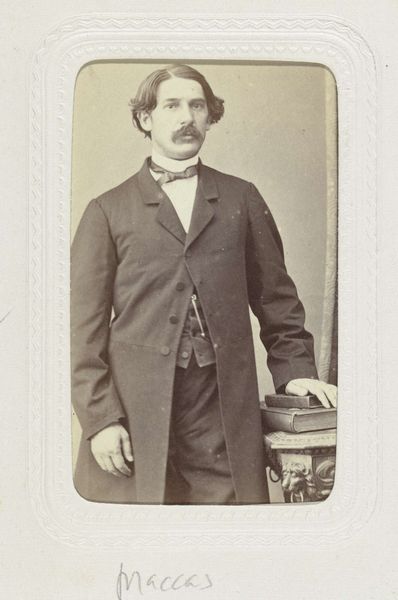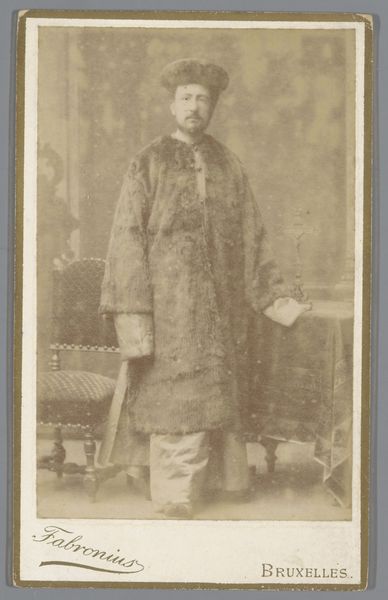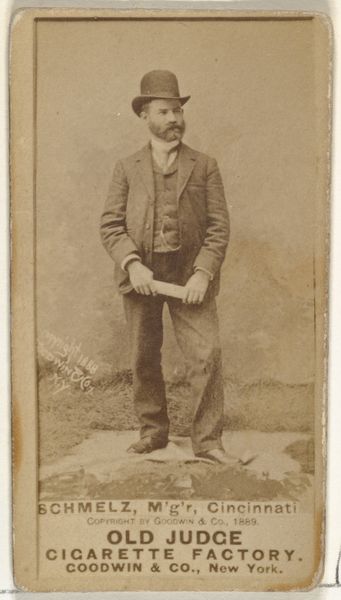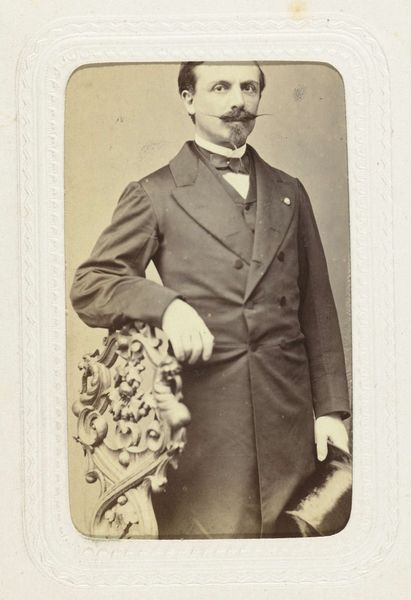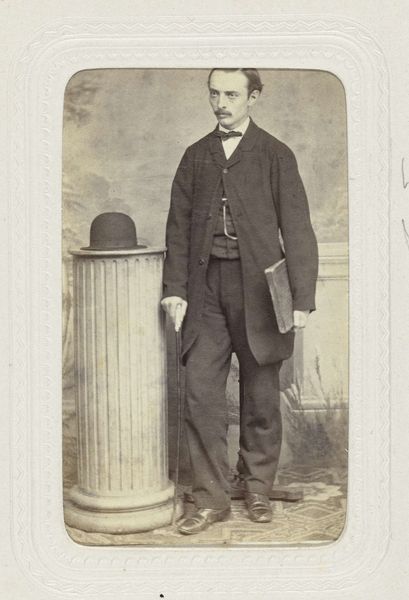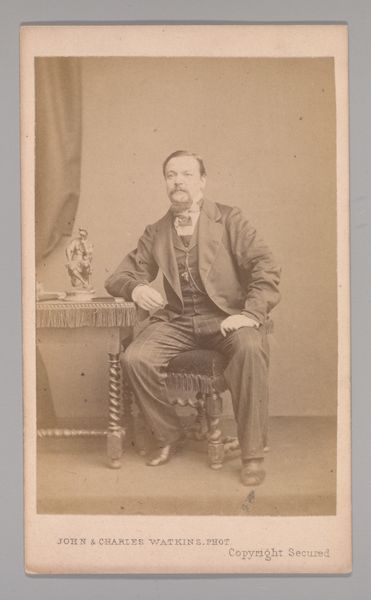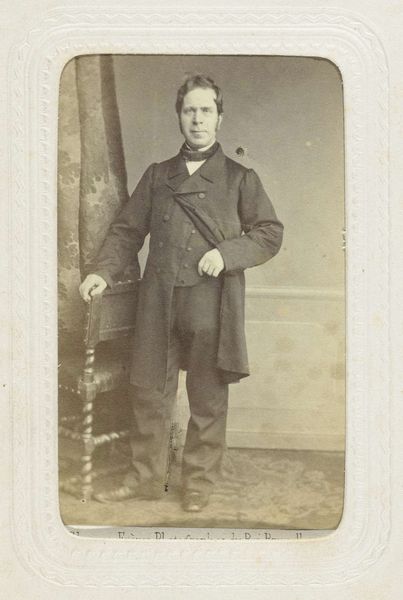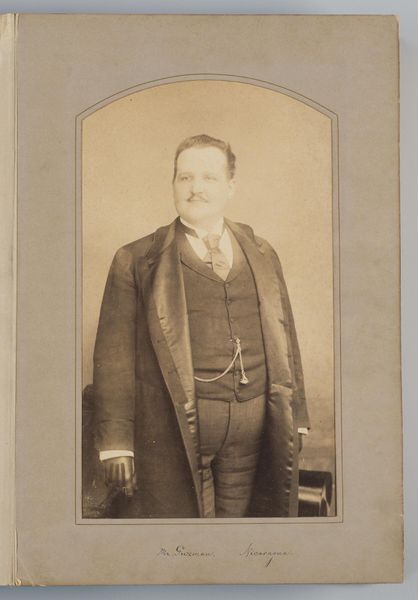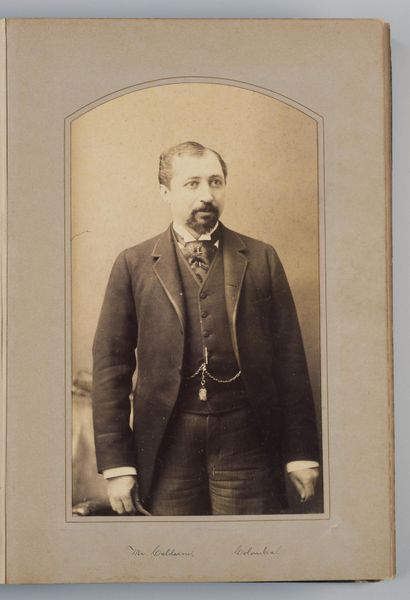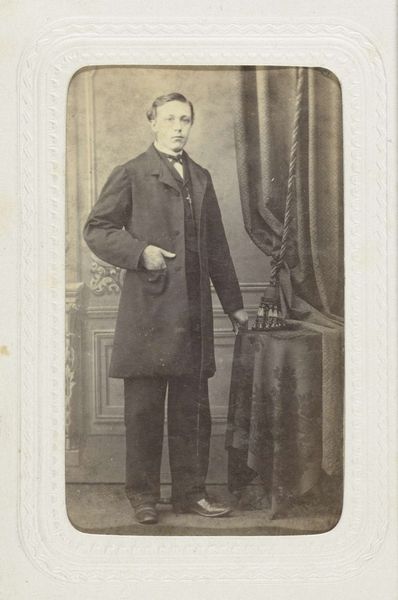
Studioportret van een man met snor in lange jas met op zijn hoofd een fez. c. 1863 - 1866
0:00
0:00
daguerreotype, photography, gelatin-silver-print
#
portrait
#
african-art
#
daguerreotype
#
archive photography
#
photography
#
historical photography
#
orientalism
#
gelatin-silver-print
#
history-painting
Dimensions: height 80 mm, width 54 mm, height 296 mm, width 225 mm
Copyright: Rijks Museum: Open Domain
Curator: This striking studio portrait captures a man with a distinguished mustache, wearing a long coat and fez. Attributed to Abdullah Frères, it dates back to around 1863 to 1866. The piece utilizes the Daguerreotype technique. Editor: There's a profound stillness to it. The sepia tones and the subject’s direct gaze create a palpable sense of dignity and reserve. It evokes a bygone era. Curator: Note the composition—how the subject is positioned slightly off-center, creating a visual tension that prevents the image from feeling static. Also, the fall of light emphasizes texture—the fabric of his coat, the delicate details of the chair—contributing to a rich surface complexity. Editor: Beyond its formal qualities, it makes me reflect on representation and power. As an image from the mid-19th century, how does this portrait participate in Orientalist modes of seeing? What expectations or fantasies about the "Orient" did photography fulfill for a Western audience, and how might this image be implicated in that dynamic? Curator: I agree that those socio-historical lenses are essential, but observe the meticulous precision of the Daguerreotype. The process itself demanded immense care and control, indicating the value placed on the subject’s likeness and social standing. Editor: The presence of that ornate chair suggests something, doesn't it? Was it a studio prop used repeatedly, a generic signifier of status? Or could it hold specific meaning tied to the sitter? It invites us to deconstruct the staged nature of the photograph, thinking about how identity is constructed and performed. Curator: Precisely! By focusing on these aesthetic and technical considerations, we gain an appreciation for the art of early photography and the artistic intent behind the image. The tonal range and the subtle contrasts provide an incredibly detailed account of mid-19th century fashion and studio practices. Editor: This portrait is an intimate encounter with history, a conversation between representation, identity, and the enduring power of the photographic gaze. The question of whose gaze it really represents makes for continuing interrogation, even today.
Comments
No comments
Be the first to comment and join the conversation on the ultimate creative platform.
